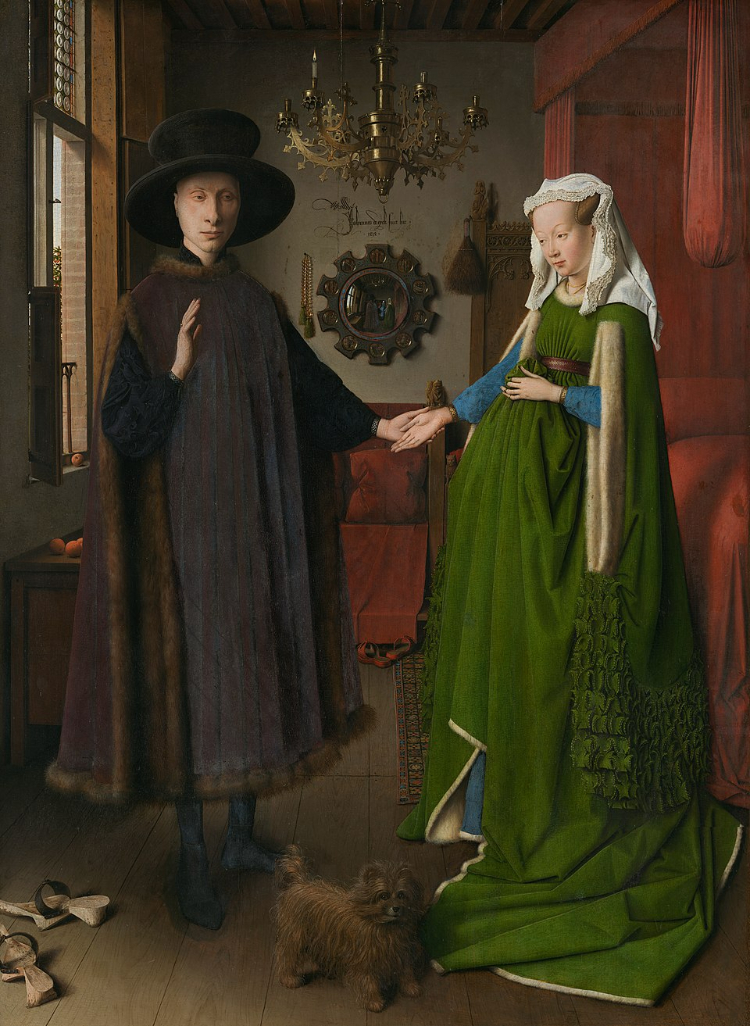The Arnolfini Portrait by Jan Van Eyck

The Arnolfini Portrait by Jan Van Eyck
Who'd think that a portrait of two people standing in a room could engender such mystery? Yet, here we are. We know this is a portrait of an Arnolfini, and are fairly certain which one - Giovanni - and his wife, but after that, all bets are off, including which wife.
Is this a marriage portrait? A contract sanctifying the marriage? A tribute for a deceased bride? There's enough symbolism stuffed throughout the painting to build your case for each.
We do know that it's a stellar example of Northern Renaissance style. The attention to detail is beyond amazing, the lighting is hauntingly real, and the forms and perspective still don't match the realism that Southern Renaissance artists will achieve in the ensuing decades.
Oh, and one other thing we know? She's not pregnant.
An Embarrassment of Riches
And we mean an embarrassment! The Arnolfinis were members of the wealthy merchant class of the period and are clearly displaying that wealth here.
The long folds of the dress - so excessive that she has to gather them near her waist, making her appear preggers - indicate the excess that the couple could indulge in. Combine that with the fact it's lined in fur and dyed a deep green, and you're reaching the pinnacle of extravagance. Dying fabric at this point in time was a time-consuming, laborious process. And, not only does she have one garment dyed from head to toe, she has two!
His garments show a similar level of extravagance. However, instead of being dyed green and blue, his outfit is a sumptuous black and plum.
The abundance of furniture in the room and the fancy chandelier show that this couple was ready to audition for the 15th century version of Cribs.
Let there be light!
As children in the age of photography, we often take the sheer effort to provide the level of detail seen in works like The Arnolfini Portrait for granted. We expect every detail to be captured by a mechanical eye, so paintings seem like a simple extension we've grown up with.
But imagine all of that detail needing to be captured and reproduced, often from memory. Northern Renaissance pieces were able to reproduce a level of detail that rivals even modern-day digital cameras. The chandelier in the center of the work perfectly captures the reflection of the outside light. The shadow on the window pane mirrors the time of day and the season.
Even more impressive is the convex mirror at the back of the painting. Its border is covered with scenes from the Passion of Christ (likely requiring the use of a single-bristle brush), and its reflection shows both the Arnolfinis and two guests they're receiving. What's more, the concave representation present in the mirror is a near-perfect reproduction of what the mirror would show in reality.
